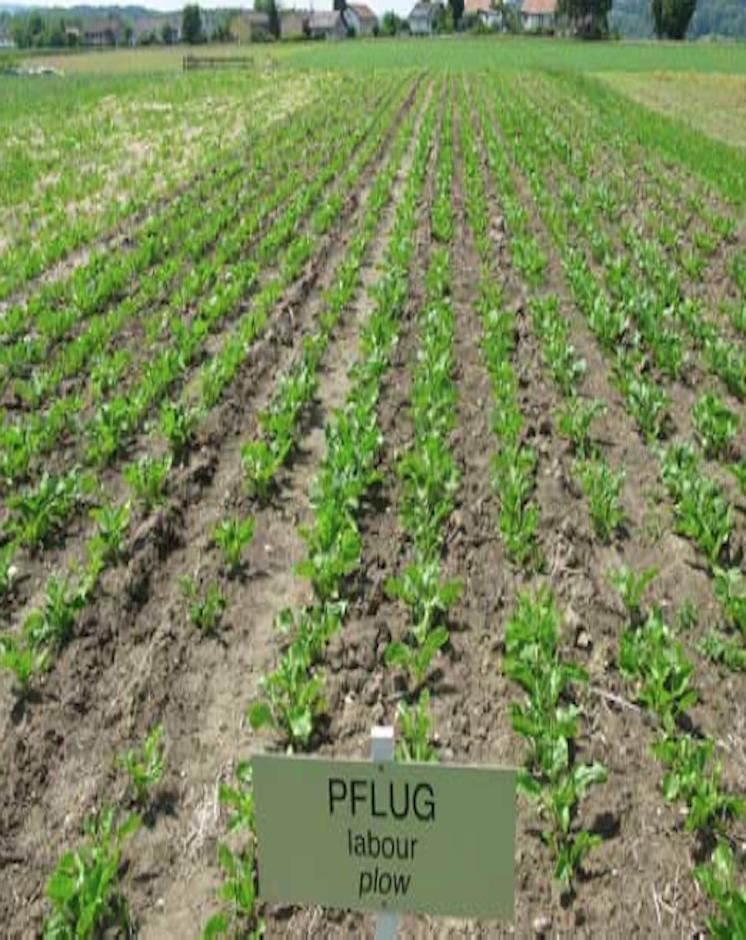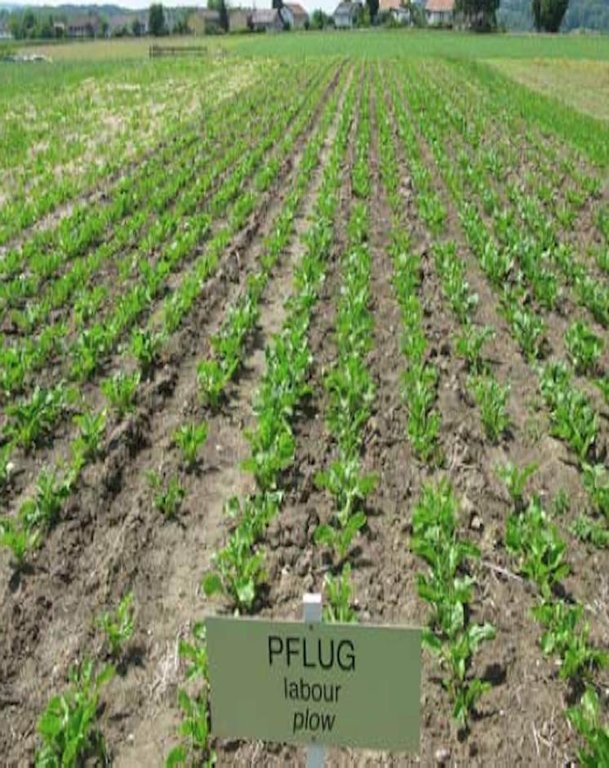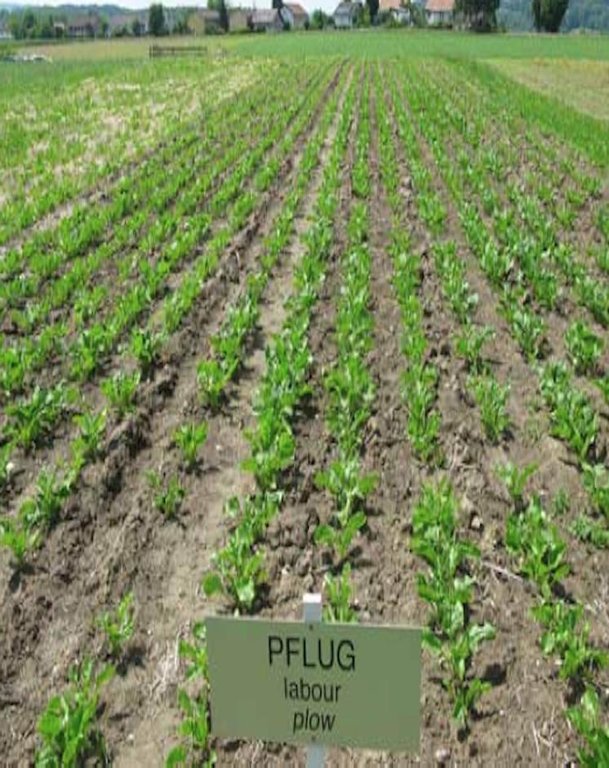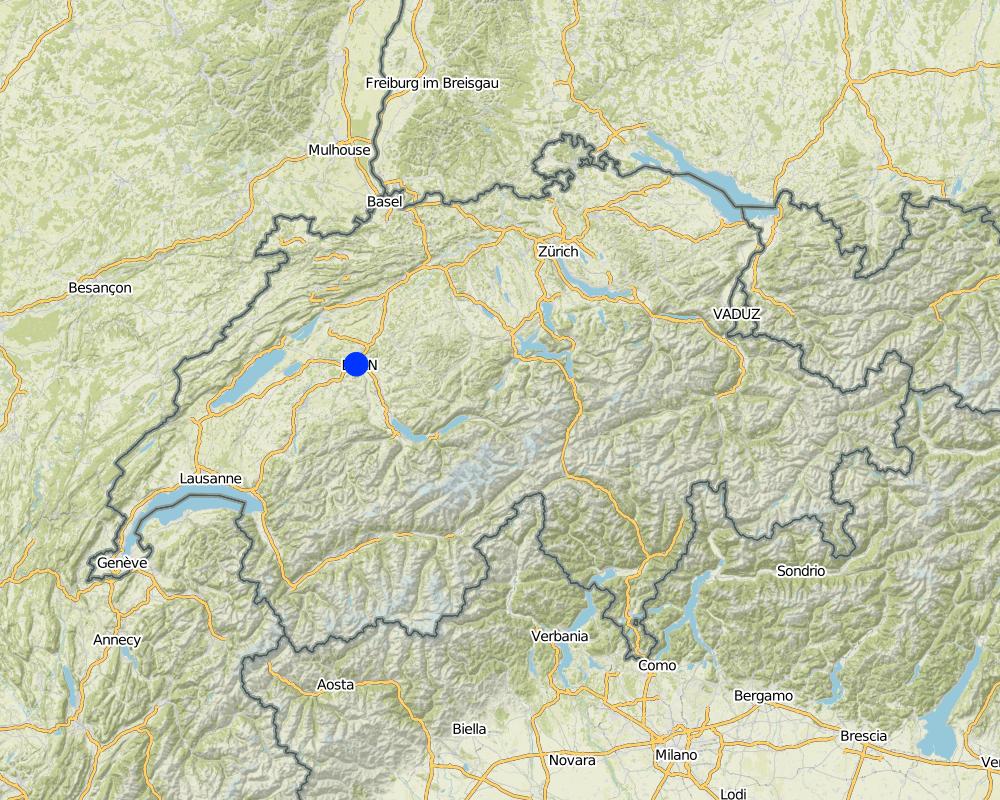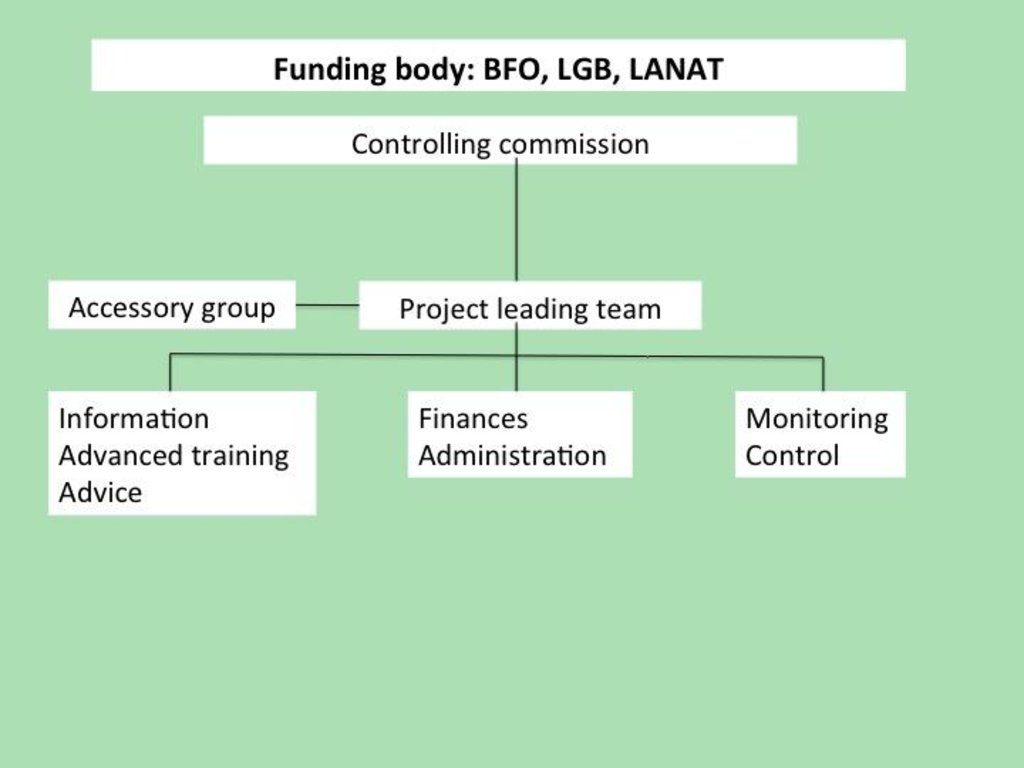Soil support program for conservation agriculture [Suíça]
- Criação:
- Atualização:
- Compilador/a: Deborah Niggli
- Editor: –
- Revisor: David Streiff
Förderprogramm Boden des Kantons Bern
approaches_2525 - Suíça
Veja as seções
Expandir tudo Recolher tudo1. Informação geral
1.2 Detalhes do contato das pessoas capacitadas e instituições envolvidas na avaliação e documentação da abordagem
Especialista em GST:
Sturny Wolfgang
wolfgang.sturny@vol.be.ch
Fachstelle Bodenschutz des Kantons Bern
Rütti, 3052 Zollikofen
Suíça
Nome do projeto que facilitou a documentação/avaliação da Abordagem (se relevante)
Preventing and Remediating degradation of soils in Europe through Land Care (EU-RECARE )Nome da(s) instituição(ões) que facilitou(ram) a documentação/avaliação da Abordagem (se relevante)
CDE Centre for Development and Environment (CDE Centre for Development and Environment) - Suíça1.3 Condições em relação ao uso da informação documentada através de WOCAT
Quando os dados foram compilados (no campo)?
06/05/2015
O/a compilador/a e a(s) pessoa(s) capacitada(s) aceitam as condições relativas ao uso de dados documentados através da WOCAT:
Sim
1.4 Referência ao(s) questionário(s) sobre tecnologias da GST
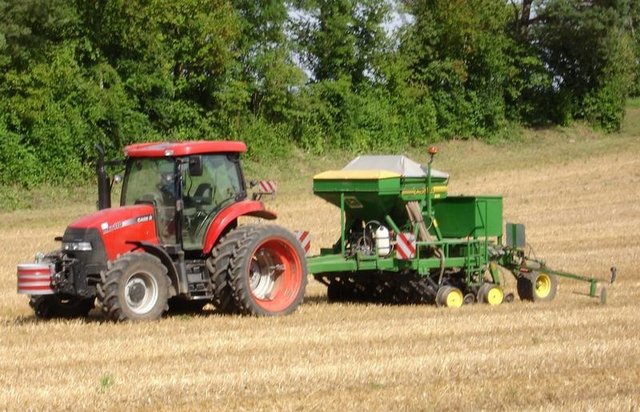
Direct seeding [Suíça]
A cropping system which allows to plant the seeds directly into the soil without ploughing. The soil is covered with plant remainders.
- Compilador/a: Unknown User
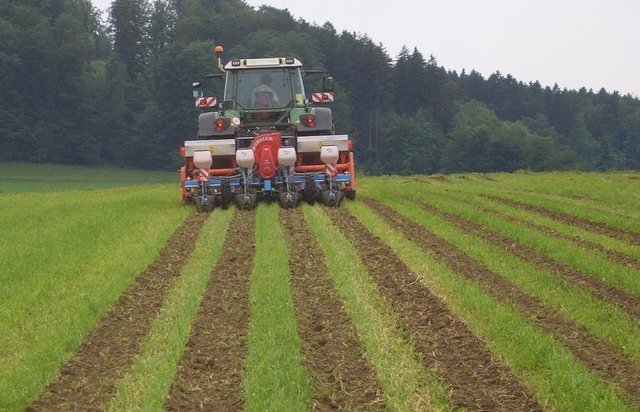
Maize strip tillage [Suíça]
A cropping system for maize which reduces the reworking of the soil to the stripes, in which the seeds are planted.
- Compilador/a: Joana Eichenberger
2. Descrição da abordagem de GST
2.1 Descrição curta da abordagem
Through the soil support program land users get subsidies for applying conservation technologies on their fields during a period of 6 years.
2.2 Descrição detalhada da abordagem
Descrição detalhada da abordagem:
Aims / objectives: The aim of the office of soil protection is to enhance the implementation of conservation agriculture technologies by swiss land users. Therefore land users can test different technologies for 6 years within the soil support program. For each technology and method they apply they get paid by the government. Thus the functional character of soil and the soil biology are preserved, soil erosion and soil compaction are prevented and production of ammoniac is reduced.
Methods: The aims named above can be reached by implementing conservation agriculture technologies such as direct seeding or mulching. Therefore, land users get a financial incentive for using and implementing such technologies on their own fields. They apply for a period of 6 years to use conservation technologies. At the beginning, at least two different technologies must be chosen. There are different technologies in the field of soil protecting cropping systems, soil composition and ammoniac reducing spreading systems. Moreover, the office of soil protection has its own testing fields where land users get an overview over the different technologies and can then decide on which method they want to apply. After a land user gets a contract, planning and details about the technology and the process of implementation are discussed separately with an advisor of the program.
A database with all information necessary for land users and controlling institutions is also granted by the office. Controllers of the local government must check the field and the implementation of the technologies of a participant land user at least once a year.
Stages of implementation: The soil support program of the Canton Bern is an extension of a previous program. Results of this previous program showed that regarding soil pollution, soil erosion and loss of nitrogen agricultural production can even be improved when using conservation technologies. Through a new agricultural policy in 2007 government is able to provide financial support for projects enhancing protection of natural resources. The soil support program was then approved 2008 and started its 6-year program in 2009. To promote this project different descriptions were made in press and media, a homepage was launched and through soil days and public speeches information was spread under land users.
When implementing a conservation technology land users get advice and consultations directly through advisors in order to provide as much information and help as possible.
Role of stakeholders: Land users are the most important group of stakeholders. They need to apply to the program and change their cropping system and implement conservation technologies. At the beginning there are many critics among them who don't trust conservation technologies to be as effective and productive as their traditionalist ones. Land users open to a change and concerning the benefit for natural and biological environment apply to the program. It is very important to involve land users and their views and concerns into the process of planning after the contract but also even at the very beginning of the program. If technologies are not compatible with their views they are not going to fully implement a technology and keep it after the program.
Advisors are employed by the program administration. It is their job to provide help to the land users. They are most important in the beginning when a land user chooses his conservation technology. They are on field together with the land user and discuss the best possible technology for the land user. To find the appropriate technology is always a tricky task.
Government and local government play the crucial role of money lenders and supervisors. Representatives of the local government need to check a land user and the application of his conservation technology at least once a year. If it is approved government provides the payment in form of subsidies for the conservation technology applied by the land user. This amount differs from technology to technology.
2.3 Fotos da abordagem
2.5 País/região/locais onde a abordagem foi aplicada
País:
Suíça
Região/Estado/Província:
Canton Bern
Comentários:
Canton of Bern
Map
×2.6 Datas de início e término da abordagem
Indique o ano de início:
1993
Ano de término (caso a abordagem não seja mais aplicada):
2015
2.7 Tipo de abordagem
- Baseado em projeto/programa
2.8 Principais metas/objetivos da abordagem
The Approach focused mainly on SLM with other activities (water and air pollution, biodiversity, rethinking agricultural practises)
The main aim of the program was to implement conservation technologies into the livelihood of swiss land users. Because of financial incentives land user even get subsidies for implementing a conservation technology on their fields. The other objective not only of the project was to get land users to overthink their traditional view of agriculture and to focus more on the conservation of natural environment and especially soil. Through the project land users shall be encouraged to carry on with the conservation technology they applied in the project. Thus, the main aims focus especially on the implementation and continuation of sustainable land use technologies in swiss agriculture.
The SLM Approach addressed the following problems: Das Hauptproblem zu Beginn des Projekts war die Unwissenheit der Bauern. So kam es teilweise zu Ernteverlusten durch falsche Anwendung einer Massnahme. Zudem ignorierten einige Bauern die Vorschriften des Programms, vor allem bei der Fruchtfolge. Eine Befolgung dieser Vorgaben ist jedoch unerlässlich für die erfolgreiche Einführung einer Massnahme und deren Gelingen. Ein nächstes Problem war der Einsatz von Glyphosat bei der Anwendung von Direktsaat. Dieses Herbizid wird auch in der breiten Bevölkerung nur gering toleriert. Ein letztes Problem waren schliesslich die traditionellen Ansichten einiger Bauern, welche wie ihre Väter und Grossväter nach Ablauf der 6 Jahre zurück auf ihre traditionellen Anbauverfahren wechselten. Hier konnte das Projekt nicht den gewünschten Erfolg erzielen.
2.9 Condição que propiciam ou inibem a implementação de tecnologia/tecnologias aplicada(s) segundo a abordagem
Normas e valores sociais/culturais/religiosos
- Inibitivo
Traditionelle Ansichten der Bauern waren zu Beginn ein Hindernis. In der Schweizer Mentalität soll alles sauber und ordentlich sein, so auch auf dem Feld.
Treatment through the SLM Approach: Unterstützung durch Berater und Hilfe. Man kann Bauern nicht zur Weiterführung einer Technologie zwingen aber sie von den Hauptvorteilen überzeugen. Sie müssen selbst die Vorteile sehen.
Disponibilidade/acesso a recursos e serviços financeiros
- Inibitivo
Zu Beginn sind grössere Ausgaben notwendig, bspw. für die Maschine/Lohnunternehmer und generelle Umstellung.
Treatment through the SLM Approach: Man zeigt den Bauern auf, dass nur zu Beginn mehr Kapital benötigt wird. Nach dem Wechsel zu einer konservierenden Technologie ist die Umstellung sehr profitabel und weniger Kapital als bei konventioneller Bodenbearbeitung ist notwendig.
Quadro institucional
- Inibitivo
Institutionen und Vereine wie etwa die Pflanzenschutzfachstelle waren zu Beginn gegen das Programm, weil es den Einsatz von Glyphosat und anderen Herbiziden fördert. Auch der Bildungssektor (Bauernschule) war skeptisch gegenüber der neuen Technologien und deren Erfolg.
Treatment through the SLM Approach: Es war wichtig, die Institutionen davon zu überzeugen, dass die Einführung einer Technologie nicht den Einsatz von Glyphosat vergrössern wollte, sondern das Ziel hatte, bodenschonende Anbauverfahren einzuführen. Diese sind jedoch an den Gebrauch von Glyphosat gebunden. Bauern sind hierbei jedoch selbst für die richtige Menge und den nachhaltigen Einsatz von Glyphosat verantwortlich. Zudem wurden mit Feldbegehungen und Diskussionseinladungen Zweifel und Ängste beseitigt.
Conhecimento sobre GST, acesso a suporte técnico
- Inibitivo
Es müssen unter Umständen neue Geräte angeschafft werden, die sehr kostspielig sind. Meist ist es jedoch lohnenswerter einen Lohnunternehmer für die Direktsaat zu beauftragen.
Treatment through the SLM Approach: Für die Anschaffung von Geräten und allgemeinen finanziellen Investitionen wird das Gespräch mit der Familie des Bauern (v.a. der Ehefrau) gesucht. Berater zeigen auf, welche technischen Geräte notwendig sind, wann es sich lohnt einen Lohnunternehmer zu beauftragen und welche Geräte nicht mehr notwendig sind (und allenfalls verkauft werden können).
3. Participação e papel das partes interessadas envolvidas
3.1 Partes interessadas envolvidas na abordagem e seus papéis
- Usuários de terra/comunidades locais
Swiss agriculture is dominated by men. Also the advisors and program leaders were mainly men. The decision of implementing a conservation technology however is made by both the land user and his wife who is an important stakeholder as well. Overall, the participation was dominated by men.
- Especialistas em GST/ consultor agrícola
- Organização não governamental
LOBAG, LONZA, BFO, Swiss No-Till
- Setor privado
Seed and fertilizer companies
- Governo local
Canton of Bern
- Governo nacional (planejadores, responsáveis pelas decisões)
Federation
3.2 Envolvimento do usuários de terra/comunidades locais nas diferentes fases da abordagem
| Envolvimento do usuários de terra/comunidades locais | Especifique quem estava envolvido e descreva as atividades | |
|---|---|---|
| Iniciação/motivação | Passivo | Land users need at first to be convinced to implement the technologies an take part in the program. |
| Planejamento | Nenhum | |
| Implementação | Apoio externo | Land users need to implement the conservation technologies. They get help and support from advisors of the program and get paid for implementing a conservation technology by the federal government. |
| Monitoramento/avaliação | Passivo | Land users are part of the monitoring because they reflect themselves and the technology they apply at every stage as well. However, it is the controllers of the local government who evaluate the technology and the application on the field. |
| Research | Participativo | For more information on the implementation and experience of the land users who applied conservation technologies, their part in the phase of research is definitely active. Interaction between research and land users takes place during workshops or field trips. Land users get also more and more interested in research results. |
3.3 Fluxograma (se disponível)
Descrição:
Organisation chart of the soil support program of the Canton of Berne
Autor:
VOL Volkswirtschaftsdirektion Kanton Bern
3.4 Decisão sobre a seleção de tecnologia/tecnologias de GST
Especifique quem decidiu sobre a seleção de tecnologia/tecnologias a serem implementadas:
- Principalmente especialistas em GST, após consulta com usuários da terra
Explique:
Decisions on the method of implementing the SLM Technology were made by mainly by land users supported by SLM specialists
4. Suporte técnico, reforço das capacidades e gestão do conhecimento
4.1 Reforço das capacidades/ formação
Foi oferecida formação aos usuários da terra/outras partes interessadas?
Sim
Especifique quem foi capacitado:
- Usuários de terra
- Equipe de campo/consultores
Tipo de formação:
- Em exercício
- Agricultor para agricultor
- Áreas de demonstração
- Reuniões públicas
- Cursos
Assuntos abordados:
Mainly the training of implementing soil conservation technologies got very interesting for the land users. They participate more frequently on trainings than they have to. They learn how to protect their field from erosion by water, when to best cultivate their fields and much more in order to successfully apply a conservation technology.
4.2 Serviço de consultoria
Os usuários de terra têm acesso a um serviço de consultoria?
Sim
Especifique se foi oferecido serviço de consultoria:
- nas áreas dos usuários da terra
Descreva/comentários:
Name of method used for advisory service: Annual meetings; Key elements: technical support, planning of crop rotation and conservation technology, monitoring
Advisory service is very adequate to ensure the continuation of land conservation activities
4.3 Fortalecimento da instituição (desenvolvimento organizacional)
As instituições foram fortalecidas ou estabelecidas através da abordagem?
- Sim, moderadamente
Especifique a que nível (níveis) as instituições foram fortalecidas ou estabelecidas:
- Local
Especifique o tipo de apoio:
- Equipamento
Dê mais detalhes:
Mainly contractor companies were highly supported because of the conservation technologies which required special technical equipment which was provided by them.
4.4 Monitoramento e avaliação
Monitoramento e avaliação são partes da abordagem?
Sim
Comentários:
bio-physical aspects were regular monitored by project staff through observations; indicators: None
technical aspects were regular monitored by project staff through observations; indicators: None
economic / production aspects were ad hoc monitored by land users through observations; indicators: None
area treated aspects were regular monitored by project staff, government through measurements; indicators: None
no. of land users involved aspects were regular monitored by project staff, government through measurements; indicators: None
management of Approach aspects were regular monitored by project staff, government through observations; indicators: None
There were few changes in the Approach as a result of monitoring and evaluation: The aim of reducing the amount of glyphosate came up frequently during the application of conservation technologies.
There were few changes in the Technology as a result of monitoring and evaluation: None
4.5 Pesquisa
A pesquisa foi parte da abordagem?
Sim
Especifique os tópicos:
- Ecologia
- Tecnologia
Dê mais detalhes e indique quem realizou a pesquisa:
Different professors of international universities provided important basic informations: John Baker (NZL), Karlheinz Köller (Hohenheim). Also the University of Bern and the technical college provided information on conservation technologies and their implementation
Research was carried out both on station and on-farm
5. Financiamento e apoio material externo
5.1 Orçamento anual para o componente de GST da abordagem
Caso o orçamento exato seja desconhecido, indique a faixa:
- > 1.000.000
Comentários (p. ex. principais fontes de recursos/principais doadores):
Approach costs were met by the following donors: government (Swiss federal government): 80.0%; local government (district, county, municipality, village etc) (Canton of Berne): 20.0%
5.2 Apoio financeiro/material concedido aos usuários da terra
Os usuários da terra receberam apoio financeiro/material para a implementação de tecnologia/tecnologias?
Sim
Caso afirmativo, especifique tipo(s) de apoio, condições e fornecedor(es):
Contributions were provided by the federal government. This was part of the Approach.
5.3 Subsídios para entradas específicas (incluindo mão-de-obra)
Se a mão-de-obra pelos usuários da terra foi uma entrada substancial, isso foi:
- Pago em dinheiro
Comentários:
Labour by land users also sometimes voluntarily
5.4 Crédito
Foi concedido crédito segundo a abordagem para atividades de GST?
Não
6. Análise de impactos e declarações finais
6.1 Impactos da abordagem
A abordagem auxiliou os usuários da terra a implementar e manter as tecnologias de GST?
- Não
- Sim, pouco
- Sim, moderadamente
- Sim, significativamente
Land user are more conscious about the protection of soil and its functions. No-tillage as a form of sustainable land management was successfully implemented and has good chances of perpetuation. Land users keep the diversity of soils and its structure, prevent soil compaction and have less work to do by applying conservation agriculture. There is also less money and financial capital required.
A abordagem concedeu autonomia aos grupos social e economicamente desfavorecidos?
- Não
- Sim, pouco
- Sim, moderadamente
- Sim, significativamente
No socially and economically disadvantaged groups were involved.
Did other land users / projects adopt the Approach?
- Não
- Sim, pouco
- Sim, moderadamente
- Sim, significativamente
Mostly land users open to new technologies and with regard to protection soil and soil erosion adopted the Approach. Neighborhood is also an important factor: if a land user near an other succeeds in applying a conservation technology and getting the benefits of it, it is likely that the other land user adopts the technology for himself.
Did the Approach lead to improved livelihoods / human well-being?
- Não
- Sim, pouco
- Sim, moderadamente
- Sim, significativamente
Soil and fields of the land user are more protected against erosion and therefore against financial loss of capital, crop failure etc.
Did the Approach help to alleviate poverty?
- Não
- Sim, pouco
- Sim, moderadamente
- Sim, significativamente
6.2 Principal motivação dos usuários da terra para implementar a GST
- Lucro (lucrabilidade) aumentado, melhora da relação custo-benefício
- Pagamentos/subsídios
- Consciência ambiental
6.3 Atividades de sustentabilidade de abordagem
Os usuários da terra podem manter o que foi implementado através da abordagem (sem apoio externo)?
- Sim
Caso afirmativo, descreva como:
The land users know very much about the conservation technologies and the application of these after the program. They also know which technology is best for their fields. Therefore, they can continue the Approach activities without support. However, the most important reason for the land users to continue is their will to do it. If a land user does not see the difference and is not fully willing to continue he will not do so even if there are subsidies for conservation agriculture.
6.4 Pontos fortes/vantagens da abordagem
| Pontos fortes/vantagens/oportunidades na visão do usuário da terra |
|---|
| With the program land users get to know how important it is to protect their soils against different types of degradation. The Approach helps to implement technologies to keep soil fertility alive on a longterm view which is highly important. (How to sustain/ enhance this strength: The knowledge of possibilities to protect agricultural fields must be spread even further under land users. Conservation technologies can be applied by every land user no matter how their fields are composed of.) |
| The program and its conservation technologies can provide some protection against future problems to be concerned with climate change. Because soil can keep more water and its storage capacity is enhanced through conservation agriculture, soil can take and hold the water for a longer time. If there is a dry period soils under conservation technologies are less likely to dry out than conventional fields. (How to sustain/ enhance this strength: The storage capacity of soils is an important character of soils and must therefore be protected which means root penetration must be sustained.) |
| When applying conservation technologies, soil is more tolerant to previous dangerous factors like heavy machines. Therefore, great and heavy machines used for conservation agriculture do not provide a risk for compaction to soils. (How to sustain/ enhance this strength: With the application of conservation technologies there are also new possibilities associated like using heavy agricultural machines without compaction. These advantages must also be noticed when debating the benefit of conservation agriculture.) |
| Pontos fortes/vantagens/oportunidades na visão do/a compilador/a ou de outra pessoa capacitada |
|---|
| With the soil support program land users learn how to best treat and cultivate their fields. The Approach has the advantage that conservation technologies can be applied for each land user individually which means that not every conservation technology is suitable for each land user. The individual solutions for a land user which are possible are a great strength. (How to sustain/ enhance this strength: The diversity of conservation technologies must be sustained in order to provide a great range of different possibilities for the land user. Not every field provides the best conditions for a certain technology.) |
| Land users and their advisors know each other most of the time quite good because advisors themselves come from the agricultural sector. This provides an atmosphere of familiarity which is positive for both of the stakeholders. Problems and ideas can be openly discussed. (How to sustain/ enhance this strength: Advisors must have an agricultural background in order to understand land users and their problems and struggles. With the same knowledge base solutions can be better found and a good working atmosphere is provided.) |
| The support provided by the advisors and the project staff is excellent. Land users get a lot of technical, bio-physical and environmental knowledge from them which they can transfer to their practices. The continuation after the 6 year's duration of the program is therefore mostly granted by the immense support for the land users. They get encouraged to continue conservation technologies and do it because they feel good and strengthened after 6 years of training and practice. (How to sustain/ enhance this strength: Support at the different stages and on different places must be guaranteed. It gives land users and the program itself much confidence of fulfilling the aims. ) |
6.5 Pontos fracos, desvantagens da tecnologia e formas de superá-los
| Pontos fracos/desvantagens/riscos na visão do usuário da terra | Como eles podem ser superados? |
|---|---|
| There are higher costs at the beginning for conservational agriculture than for conventional agriculture. New machines or contractors are needed to cultivate the fields. | Higher costs at the beginning can not directly be overcome. But it must be mentioned that there will be lower costs after the beginning and that the implementation of a conservation technology on a longterm base is profitable. |
| There is much working effort needed in the beginning for implementing and applying a new technology. The benefit may not always be seen. | Land users themselves must see the advantages even when they need to do more at the beginning. The relationship with other land users and the support of the family plays also a crucial role here. The Approach itself just provides an overview of the advantages and gives advice to the land user. |
| Compared to the number of total land users in the Canton of Bern or Switzerland itself, conservation agriculture is practiced only by about 3%. This number is far too low. | The program can not be unlimited to all land users because of the financial subsidies. It could however be stretched to other Cantons to provide a similar program. But this might be very difficult because of the financial resources. Conventional agriculture must therefore get more attention in public and in politics. |
| Pontos fracos/vantagens/riscos na visão do/a compilador/a ou de outra pessoa capacitada | Como eles podem ser superados? |
|---|---|
| The number of applicants is limited by the project. Compared to the total number of land users in Canton Bern there are just few participants to the program. | The conditions for participation could be reduced for land users. This would probably lead to more participants. However, more participants require more subsidies and therefore the costs increase. If government would approve of this is therefore doubtful. |
7. Referências e links
7.1 Métodos/fontes de informação
- visitas de campo, pesquisas de campo
- entrevistas com especialistas em GST
7.2 Referências às publicações disponíveis
Título, autor, ano, ISBN:
VOL (Volkswirtschaftsdirektion des Kantons Bern) 2009: Bodenbericht 2009
Disponível de onde? Custos?
Bodenfachschutzstelle des Kantons Bern, Rütti, 3052 Zollikofen
Links e módulos
Expandir tudo Recolher tudoLinks

Direct seeding [Suíça]
A cropping system which allows to plant the seeds directly into the soil without ploughing. The soil is covered with plant remainders.
- Compilador/a: Unknown User

Maize strip tillage [Suíça]
A cropping system for maize which reduces the reworking of the soil to the stripes, in which the seeds are planted.
- Compilador/a: Joana Eichenberger
Módulos
Não há módulos


